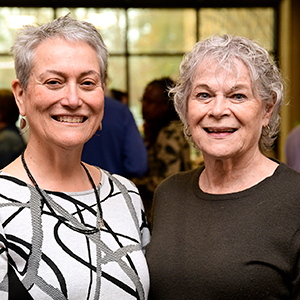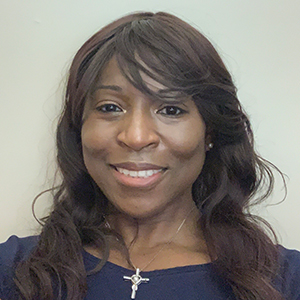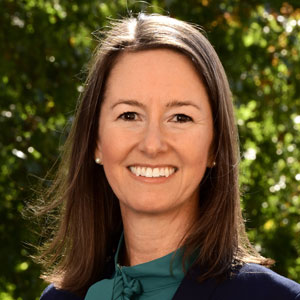The NIEHS Office of Science Education and Diversity (OSED) and Division of Extramural Research and Training (DERT) were active on the fall conference circuit, sharing employment and research funding opportunities with students and early-career researchers from underrepresented backgrounds.
Since 2010, as part its efforts to increase engagement with such individuals and to enhance diversity across the workforce, OSED has participated in student-focused scientific meetings alongside many other National Institutes of Health (NIH) institutes and centers. Together, they have formed an “NIH Row” at various exhibit halls.
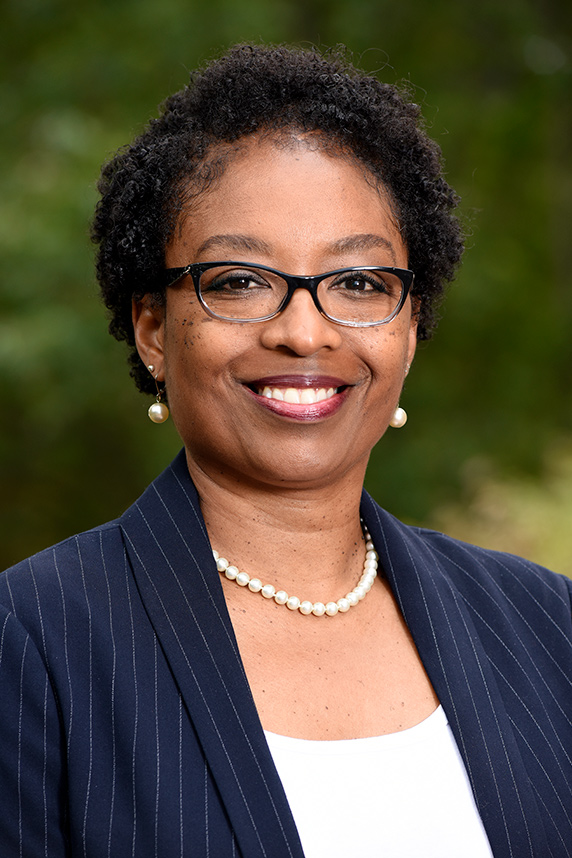 Reid oversees OSED activities, such as educational outreach and assisting students from underrepresented groups who are interested in environmental health careers. (Photo courtesy of Steve McCaw / NIEHS)
Reid oversees OSED activities, such as educational outreach and assisting students from underrepresented groups who are interested in environmental health careers. (Photo courtesy of Steve McCaw / NIEHS)“These last two years, despite the COVID-19 pandemic, we have come together to represent NIH on virtual conference platforms,” said OSED Director Ericka Reid, Ph.D. “Although challenging, student participation has remained high, and conferences have remained committed.”
Supporting under-represented scientists
Reid hosted a digital booth at the 2021 National Diversity in STEM Conference hosted by the Society for the Advancement of Chicanos/Hispanics and Native Americans in Science (SACNAS) Oct. 25-29. STEM stands for science, technology, engineering, and math.
Fact sheets about NIH, NIEHS employment, and diversity funding opportunities were distributed, and several DERT staff — Health Specialist Astrid Haugen and Health Science Administrators Kristi Pettibone, Ph.D., and Melissa Smarr, Ph.D. — helped to answer attendees’ questions. Reid held one-on-one sessions with participants to share related information.
The work to engage more underrepresented minorities in STEM continued with another digital booth at the Annual Biomedical Research Conference for Minority Students, which was held Nov. 10-13.
“It was wonderful to have members of DERT work with me in the digital booths and present during networking sessions this year,” Reid said. “I look forward to continued partnership in this outreach effort.”
“I found attending both conferences to be rewarding,” she added. “We were able to reach and support undergraduate and graduate students as well as faculty and administrators involved in various STEM efforts.”
Grantees share research on environmental justice
NIEHS staff also coordinated a STEM seminar titled “Environmental Health in Indigenous and Latino Communities: Environmental Justice and Climate Change” at the SACNAS meeting. Led by Heather Henry, Ph.D., health science administrator for the institute’s Superfund Research Program, the session featured NIEHS grantees who shared information about ongoing community-engaged research programs looking at environmental health disparities.
The session included talks by the following institute-funded scientists.
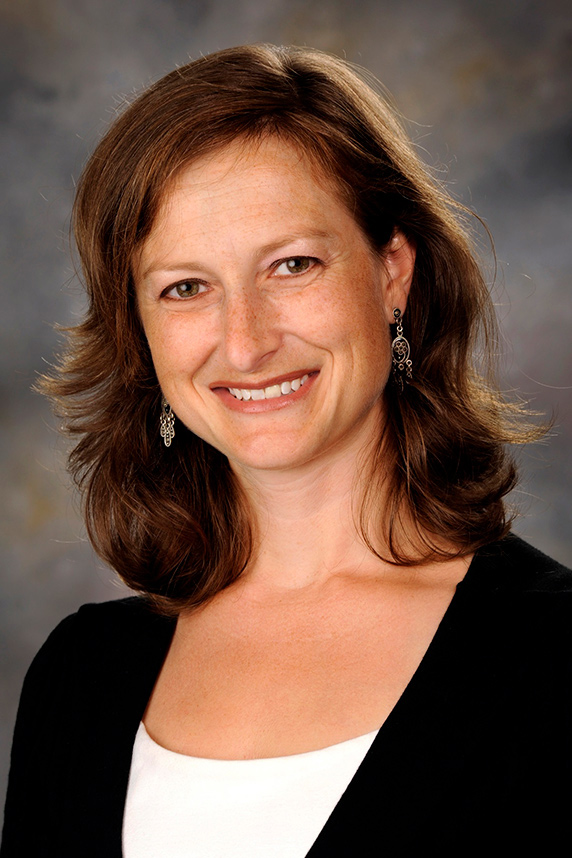 Henry oversees Superfund Research Program grants related to human health toxicology, risk assessment, detection technologies, and remediation approaches. Follow the program on Twitter at @SRP_NIEHS. (Photo courtesy of Steve McCaw / NIEHS)
Henry oversees Superfund Research Program grants related to human health toxicology, risk assessment, detection technologies, and remediation approaches. Follow the program on Twitter at @SRP_NIEHS. (Photo courtesy of Steve McCaw / NIEHS)- Jose Cordero, M.D., from the University of Georgia — “Resilience to Hurricanes, Pandemics, and Environmental Health Inequities: The Puerto Rico Experience.”
- Jani Ingram, Ph.D.(https://www.niehs.nih.gov/research/supported/translational/peph/grantee-highlights/2017/#a809867), from Northern Arizona University — “Chemistry and Health Impacts of Environmental Pollutants: How Climate Change Enhances Existing Disparities.”
Also, Yoshira Ornelas Van Horne, Ph.D., from the University of Southern California, presented “Community-Driven Exposure Science to Advance Environmental Justice and Health Equity.”
Haugen, Pettibone, Reid, and Smarr, along with Lindsey Martin, Ph.D., and Liam O’Fallon, both from the NIEHS Population Health Branch, helped to plan and organize the event, which drew 292 attendees.
“The presentations emphasized how vulnerable communities, in the face of disasters, have used scientific research to inform decision-making and policies to improve their health and their environment,” said Henry. “The speakers also touched on how important it is for research teams to develop bidirectional engagement with impacted communities to be most impactful in reversing environmental inequities.”
(Jennifer Harker, Ph.D., is a technical writer-editor in the NIEHS Office of Communications and Public Liaison.)








